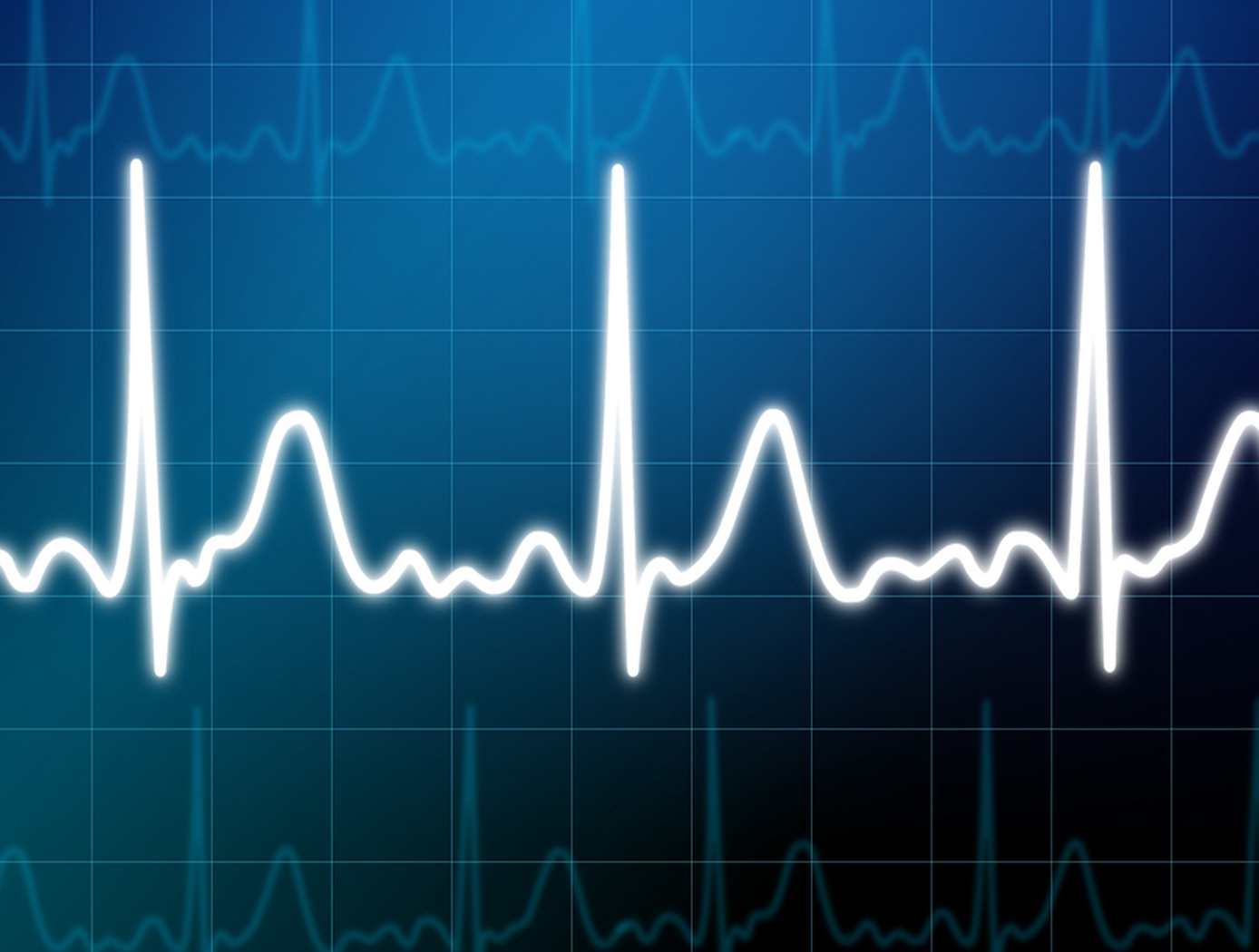HeartBeatID
health medicine and biotechnology
HeartBeatID (TOP2-186)
Patent Only, No Software Available For License.
Overview
One or more biometric indicia, such as fingerprints, voice-prints, retinal scans, and facial features are often proposed to be used to identify, or to authenticate the asserted identity of a user who seeks access to a given resource. This invention provides a method and associated system for authenticating or declining to authenticate an identity asserted by a candidate person. The heartbeat system is a new biometric technique to verify someone's identity. It can be used in everything from replacing an individuals PC passwords to access a bank account.
The Technology
Cardiac muscle is myogenic and is capable of generating an action potential and depolarizing and repolarizing signals from within the muscle itself. An intrinsic conduction system (ICS), a group of specialized cardiac cells, passes an electrical signal throughout the heart. This technology is a method and associated system to identify a person based on the use of statistical parameters, peak amplitudes and/or time interval lengths and/or depolarization-repolarization vector angles and/or depolarization-repolarization vector lengths for PQRST electrical signals associated with heart waves. The statistical parameters, estimated to be at least 192, serve as biometric indicia to authenticate or to decline to authenticate an asserted identity of a candidate person. There are three on-line modes of operation enrollment, verification, and identification as well as two off-line modes statistics and settings. In enrollment the raw electrocardiography (ECG) signal is processed and the results in the form of parameters are serialized and saved. Verification and Identification procedures use the feature parameters for recognition (classification) of subjects based on the same kind of parameters (features) of heartbeats extracted from the ECG signal of a person to be verified or identified.


Benefits
- Physiological parameters
- Living biometric characteristics
- Accuracy and precision
- Ability to identify if a subject is already in the database
- Friendly Graphical User Interface
- High speed due to C++ code
- Portability to mobile platforms
- Highly secure High universality
- High Uniqueness
Applications
- Identity Verification
- Justice/Law Enforcement
- Mobile Biometrics
- Banks and financial institutions
- Network Login Solution
- PC/Laptop Security
- Time and Attendance
- Healthcare Biometric
- Logical Access Control
- E-commerce and Web Applications
- Homeland Security / Airports / National ID Documents
Similar Results

Method and Device for Biometric Verification and Identification
The advantage of using cardiac biometrics over existing methods is that heart signatures are more difficult to forge compared to other biometric devices. Iris scanners can be fooled by contact lenses and sunglasses, and a segment of the population does not have readable fingerprints due to age or working conditions. Previous electrocardiographic signals employed a single template and compared that template with new test templates by means of cross-correlation or linear-discriminant analysis.The benefit of this technology over competing cardiac biometric methods is that it is more reliable with a significant reduction in error rates. The benefit of this technology is that it creates a probabilistic model of the electrocardiographic features of a person instead of a single signal template of the average heartbeat. The probabilistic model described as Gaussian mixture model allows various modes of the feature distribution, in contrast to a template model that only characterizes a mean waveform. Another advantage is that the model uses both physiological and anatomical characterization of the heart, unlike other methods that mainly use only physiological characterization of the heart. By combining features from different leads, the heart of the person is better characterized in terms of anatomical orientation because each lead represents a different projection of the electrical vector of the heart. Thus, employing multiple electrocardiographic leads provides a better performance in subject verification or identification.

Portable Unit for Metabolic Analysis (PUMA)
PUMA represents a major breakthrough in portable metabolic analysis. It is a rugged, compact device that measures human metabolic function at rest, during exercise, in clinical settings, and in extreme environments. Metabolic measurements are a clinically proven method of monitoring cardiovascular health and fitness levels.
The PUMA headgear features NASA-developed sensors that evaluate six key metabolic functions. Specifically, PUMA measures oxygen and carbon dioxide partial pressure in addition to temperature, pressure, airflow, and heart rate. By placing sensors close to the mouth, PUMA can record up to 30 (or more) detailed measurements for each breath. From these measurements, PUMA computes metabolically relevant quantities of oxygen uptake, carbon dioxide output, minute ventilation, respiration rate, and heart rate. With additional software, the device computes heart rhythm, tidal volume, and alveolar and dead-space volumes. A small embedded computer controls and acquires data from all sensors at 10 hertz (Hz), performs calculations, and transmits data wirelessly to a remote computer. The PUMA sensors are low power, stable, and capable of operating in a range of environments, including very high and low pressures as well as high- and low-oxygen environments. This portable device provides real-time measurements that are just as accurate as the large stationary metabolic carts used in hospitals. PUMA can be used not only in clinical settings but also in the extreme/remote environments of space, aviation, underwater, and deep underground. Because it detects real-time dangerous drops in oxygen, it can ensure astronaut cardiovascular health; predict the onset of hypoxia in pilots, divers, and first responders; and advance chronic pulmonary disease monitoring and athletic training.

Integrated Genomic and Proteomic Information Security Protocol
NASA GSFC has developed a cybersecurity security protocol consisting of message exchanges utilizing message authentication codes and encryption codes derived from the genetic encoding system for key generation, Proteins and the processes of transcription and translation of DNA and RNA into proteins. These are used in conjunction with the existing principles of a public key infrastructure and traditional encryption and authentication algorithms and processes. This security protocol requires a cryptanalysis infrastructure not available to most attackers. By using the processes of transcription and translation of actual genes (referred to as biogenes) in conjunction with a genomic and proteomic based encryption and authentication approach, security is achieved in two simultaneous domains. An attacker has to successfully breach both domains simultaneously for successful network attack.

Digital to Analog Transformation and Reconstruction of ECG Data
NASA innovators developed a method and apparatus for digital to analog conversion and reconstruction of multichannel electrocardiograms. The technology uses an algebraically optimized hardware configuration and software format that re-creates the presence of a connected patient when the patient is no longer actually present. This simplified method makes it easier and possible to transmit stored digital ECG data collected on one machine into another for an automated second opinion. Along with this functionality, the technology would make it possible to share the data collected for difficult-to-interpret 12-lead ECGs and rhythms with others in different locations.
The device allows for very inexpensive ECG hardware front ends to be utilized for data collection since the digital data obtained will always be accurately convertible back to analog for fuller analysis at any central ECG receiving station. This capability would be useful for several situations, such as patients being monitored for heart conditions at home, student athletes participating in ECG screening programs, and individuals being screened in underdeveloped countries or remote areas. The NASA developed technology would be useful in collecting ECG data in environments such as military mobile units, oil platforms, mountaineering, and expeditions.
This NASA Technology is available for your company to license and develop into a commercial product. NASA does not manufacture products for commercial sale.

Wearable RFID Sensor Tags Yield Extended Operational Times
This technology exploits the inherently passive nature of RFID to approximate the services provided by traditional active Internet of Things (IOT) protocols like ZigBee and Bluetooth. A novel store-and-forward overlay on COTS RFID protocols allows an RFID active tags to transit through an ecosystem of RFID interrogators, exploiting contact opportunities as they arise and quietly transfers sensor readings at nearly no power cost to the RFID active tag. Specific intelligence built into both the interrogator and the tag leverages the RFID tag user memory (UM) as a stand-in IOT interface. The tag operates by sampling data into timestamped packets and loads them into tag memory. When an interrogator in the ecosystem realizes that a tag is in view and that there is unrecovered data on the tag, it takes custody of the sensor data packet and offloads the data into a database. A smart scheduler reads from the population of interrogators and schedules data transfers for specific tags when an interrogator can seed the custody transfer process for the data packets. NASA has produced working prototypes of wearables, worn by the crew aboard the International Space Station, that reports humidity, temperature and CO2 readings. In one estimate, the battery life is on pace to last an estimated nine years.
The Low-Power RFID to Collect and Store Data From Many Moving Wearable Sensors is a technology readiness level (TRL) 6 (system/subsystem prototype demonstration in a relevant environment). The innovation is now available for your company to license and develop into a commercial product. Please note that NASA does not manufacture products itself for commercial sale.



